Beauty and the Beast leaves lasting legacy on Melbourne, Broadway theatre scenes
Bert Newton called Beauty and the Beast “the greatest theatre show that Australia has ever seen”. Find out how it launched Hugh Jackman’s career, and why its legacy lasts to this day.
VWeekend
Don't miss out on the headlines from VWeekend. Followed categories will be added to My News.
Hugh Jackman’s big break – as the villainous Gaston in the 1990s production of Beauty and the Beast – began with a casual audition in the lobby of Melbourne’s Hotel Windsor.
It almost didn’t happen at all, says Matt West, the musical’s choreographer-turned-director.
He and his team couldn’t find the right Aussie actor to fill Gaston’s enormous boots and were about to give up.
“That’s the one character we could not find,” West says. “We were about to leave the country. We were going to have to come back and look for a Gaston.
“(Then) Hugh came into the Windsor hotel. There was a piano in the lobby and we auditioned him (there). He sang and read for us. I gave him some dance steps, just to move him a little bit … (all) in the lobby. And he blew us away. He left and we said: ‘He’s the one.’”
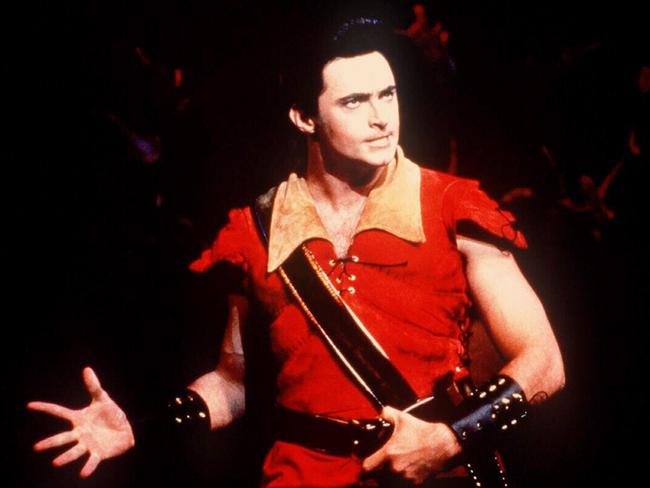
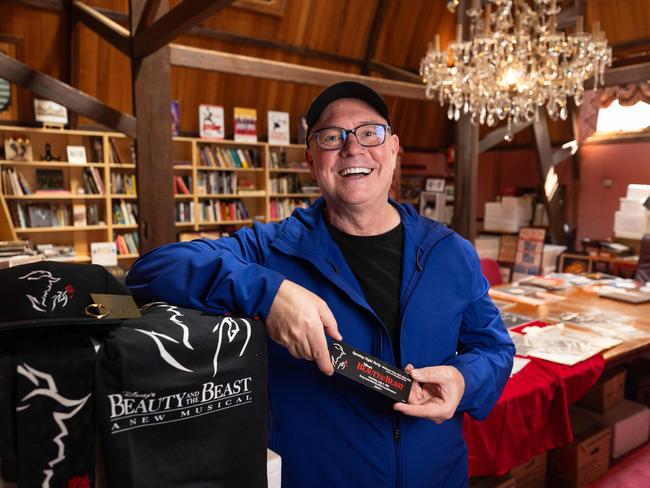
The now-Hollywood megastar was just out of acting school at the time.
A role on short-lived TV drama Correlli, alongside former wife Deborra-Lee Furness, was his only credit. And musicals weren’t on his radar.
In a 1996 interview with 60 Minutes, Jackman said: “I thought my agent was on drugs when she said I was going to go for the audition (for Beauty and the Beast). I madly went for singing lessons.”
The rest is history.
West takes us on this trip down memory lane while visiting the Princess Theatre, the site of Beauty and the Beast’s celebrated 1995-96 season, to mark the musical’s 30th anniversary.
In addition to being the choreographer of that production, the New York-based theatre veteran was part of the team that brought the animated movie to the stage.
He is now the director and choreographer of the Beauty and the Beast revival playing at Her Majesty’s Theatre in Melbourne, following successful stints in Sydney and Brisbane that have yielded more than one million ticket sales.
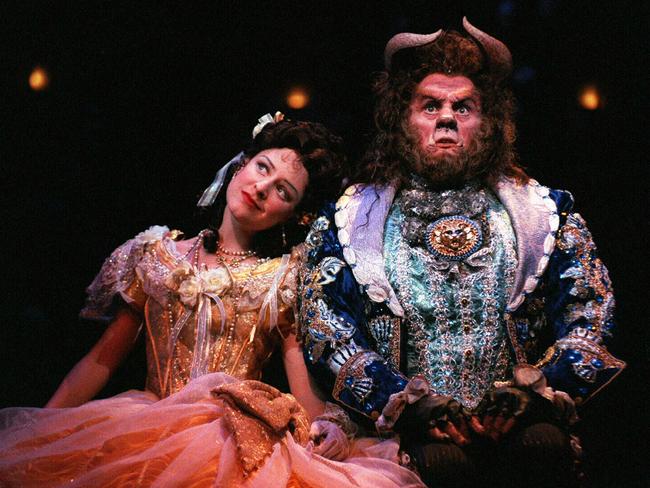
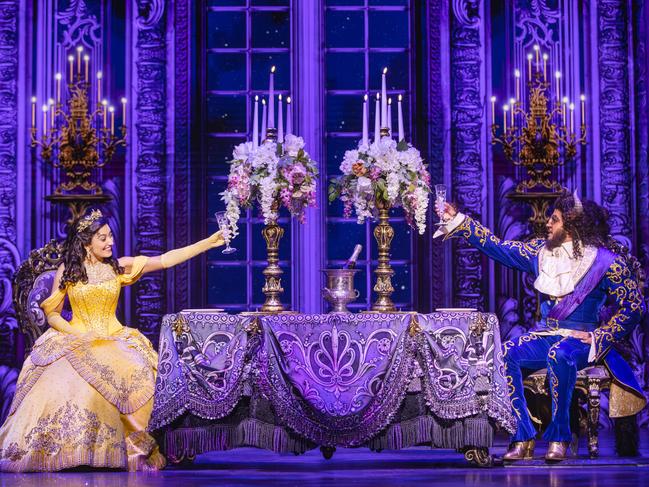
The story of Belle, the Beast, Gaston and co was Disney’s first Broadway venture, premiering on April 18, 1994. It closed 13 years and nearly 5500 performances later as one of the longest-running productions New York’s theatre district had ever seen.
On July 8, 1995, the musical opened in a second city: Melbourne.
Joining Jackman in the cast were Bert Newton as Cogsworth, Rachael Beck as Belle and Michael Cormick as the Beast.
It has since been performed in dozens of countries, and left an enduring legacy on New York and Melbourne’s theatre scenes.
In The Complete Book of 1990s Broadway Musicals, Dan Dietz writes that its “resounding success opened the floodgates for a spate of … productions based on Disney and other family-oriented films”, transforming Broadway into “a theme park with a parade of musicals aimed at kids and teenagers”.
West agrees with this to an extent, but says the outcomes have only been positive.
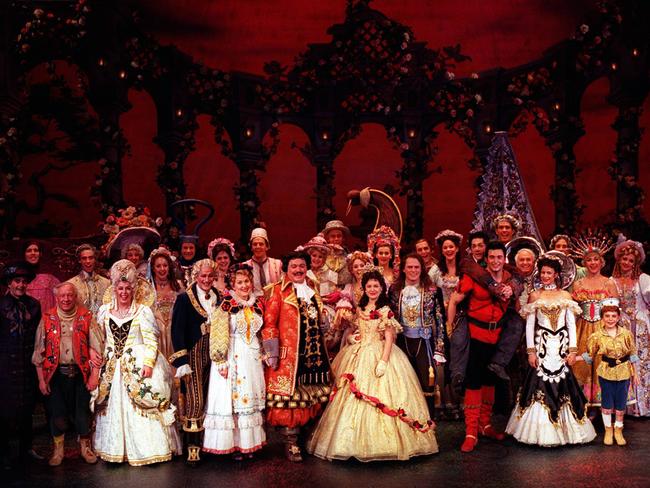
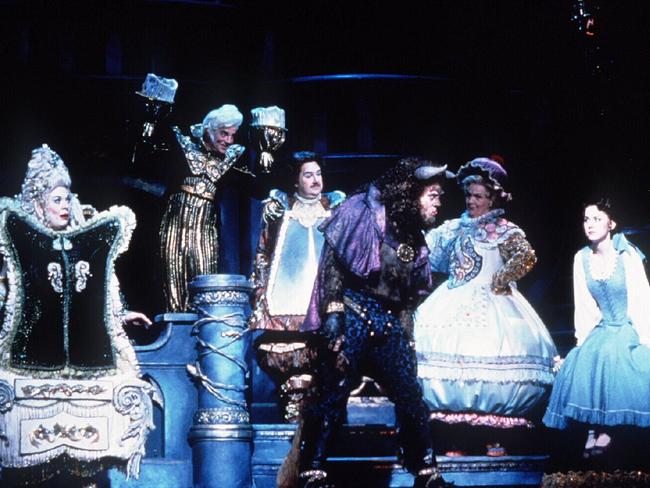
“These are our theatregoers of tomorrow,” he says. “They’re being introduced to theatre in a clever, classy way (that’s) relevant to them.”
He continues: “We weren’t very welcomed (on Broadway) when we opened Beauty and the Beast, because it was corporate America coming into theatre.
“But Disney came in the right way – we helped the community, restored the New Amsterdam theatre, and cleaned up 42nd St (around the formerly risque Times Square).”
Other corporations followed, West says, including Universal and Warner Brothers.
Together, they “brought new life and advertising money, so shows and theatres could be marketed well”.
“It was a positive thing for theatre,” he adds. “The theatre community slowly let their guard down and now they’re glad to see the next Disney show come in.”
Disney was initially reluctant to foray into musicals. West recalls that when he and his colleagues first approached then-chief executive Michael Eisner with the idea in the early ’90s, his response was, “Absolutely not”.
West adds: “But he also said, ‘You can ask me again’, because he wanted to keep us around.”
Six months later, Eisner conceded West and co were “not going to stop bugging me about this” and said yes, if the right project emerged.
In 1991, Beauty and the Beast, the animated film, was released.
“The New York Times called it the best Broadway musical of the season, and it was a movie,” West says. “So Michael called us up and said, ‘How about Beauty and the Beast?’”
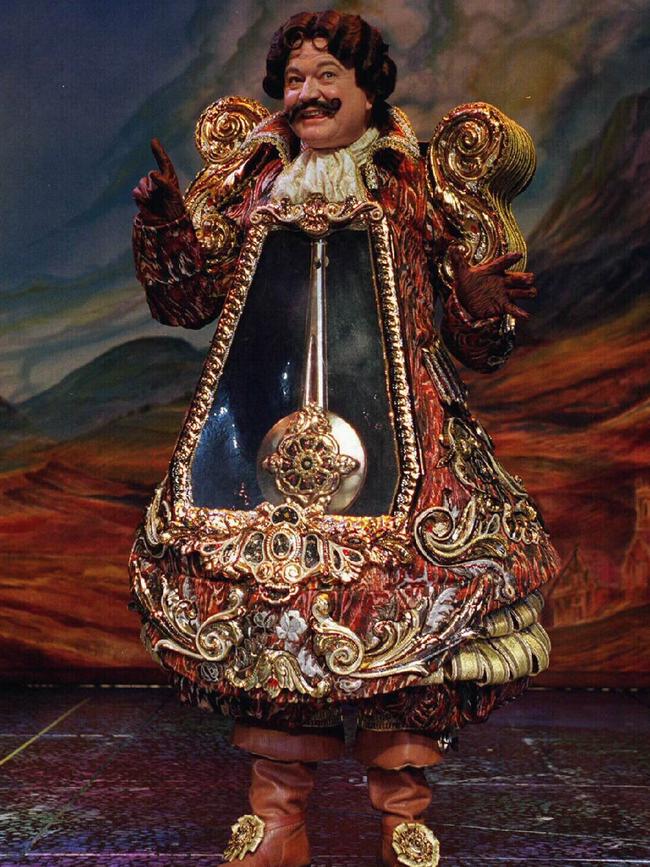
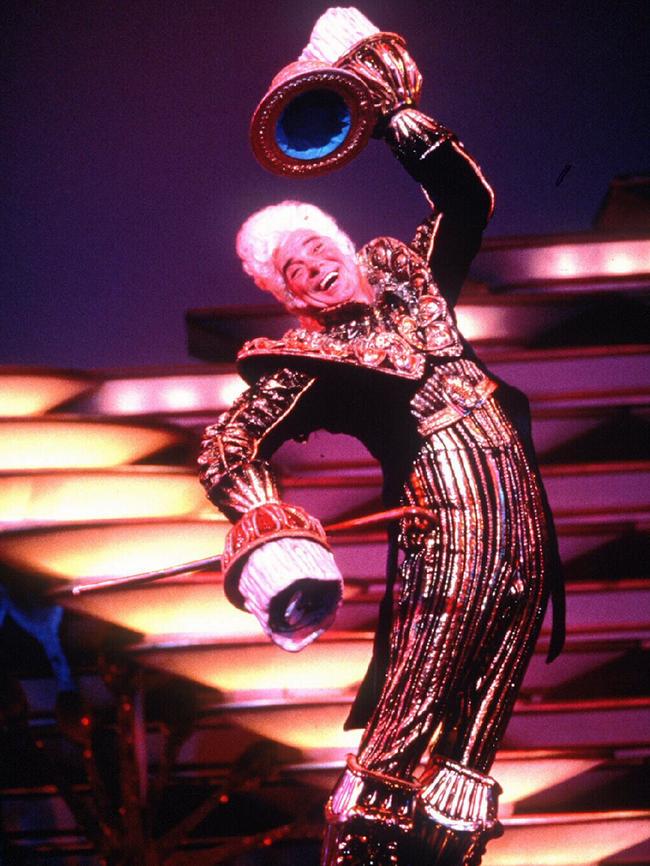
The musical took about three years to develop. After 15 months on Broadway, it arrived on Spring St.
West says Melbourne was a no-brainer for the show’s second stop, as a global destination for theatre where audiences loved musicals, and spoke English.
“Australia also has one of the most talented pools of actors in the world, so we felt safe here,” West says. “We felt that we could recreate the Broadway company using Australian actors, but add Australia’s own feeling and flavour.”
Jackman was “delightful to work with”, as was Beck as Belle. Newton was “a fantastically funny, charming, amazing man”, West says.
“He taught me a lot about comedy. I miss him so much.”
The late, great Australian media personality was equally excited to play Cogsworth – the Beast’s head butler who is transformed into a clock by a witch’s curse.
On the eve of opening night at the Princess Theatre, he told Good Morning Australia the production was “going to be the greatest theatre show that Australia has ever seen”. Beck says this assessment was spot on. “It was lavish, magical. No expense was spared. We all knew we were part of something special and, because Disney Theatrical had never come to Australia before, there was a lot of buzz around it.”
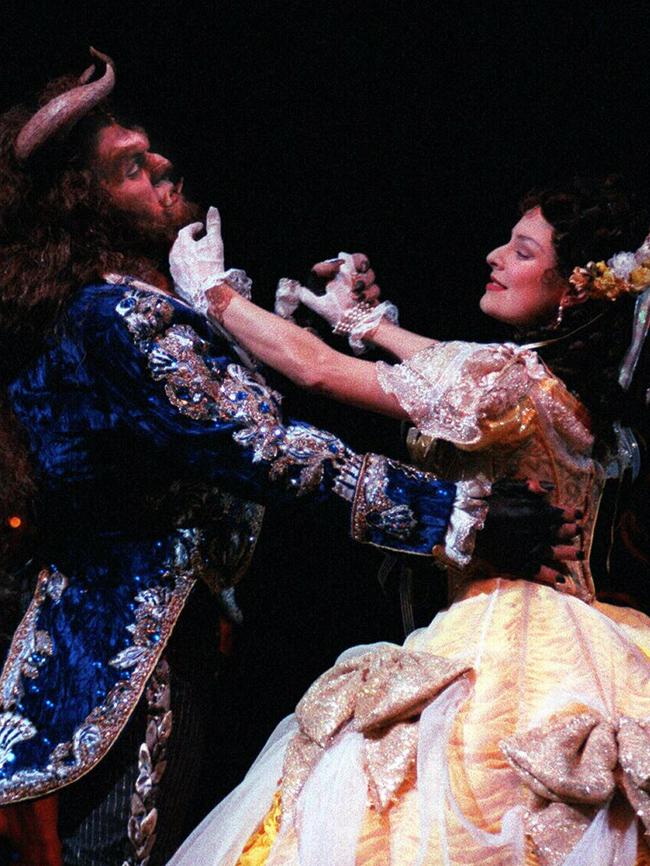
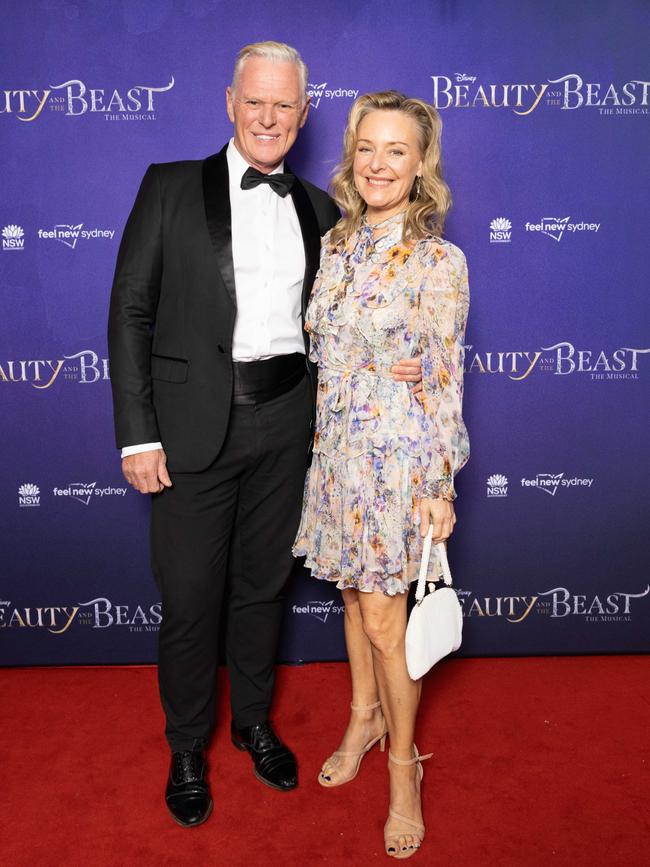
Cormick adds: “It was a phenomenon. The audience reaction from day one was standing ovations every day, every night. I still have people come up to me and say, ‘I saw the show.’ It had such an effect, it became iconic.”
The role of the Beast was a “defining moment in my career”, Cormick says. It involved two-and-a-half hours in the make-up chair for each performance and donning a “body suit modelled on a body builder and covered in hair”.
He has kept the secret to this day of how his character transformed in front of audience’s eyes from a handsome prince into a monster – “I haven’t even told my mother.”
Originally asked to audition as Gaston, Cormick recalls telling producers he was more drawn to Belle’s tortured love interest. His stunning performance of first-act-ending ballad If I Can’t Love Her convinced them.
Being involved in the show also changed his life offstage. Cormick remains close friends with Beck – “I’m Godfather to her daughters.”
He cherishes the time he shared on- and offstage with Newton, and the relationship he developed with Jackman.
“I remember he was like an excited puppy the first day,” he says. “He’d come to me for advice, because I’d been around a bit longer, asking, ‘Am I doing that right, how’s that going?’ I ended up singing at his and Deborra-Lee’s wedding.”
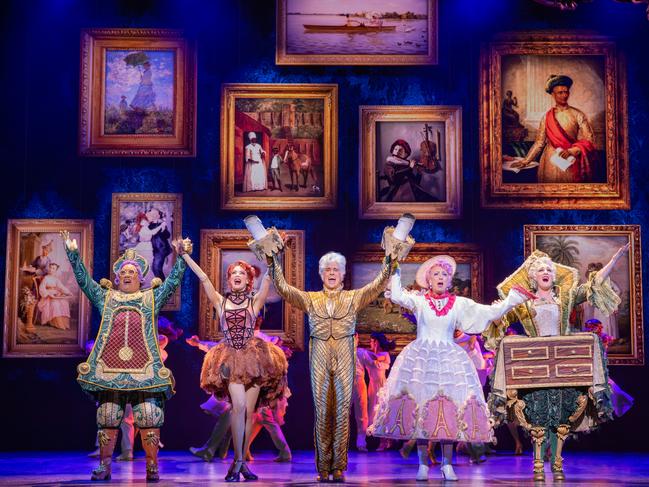
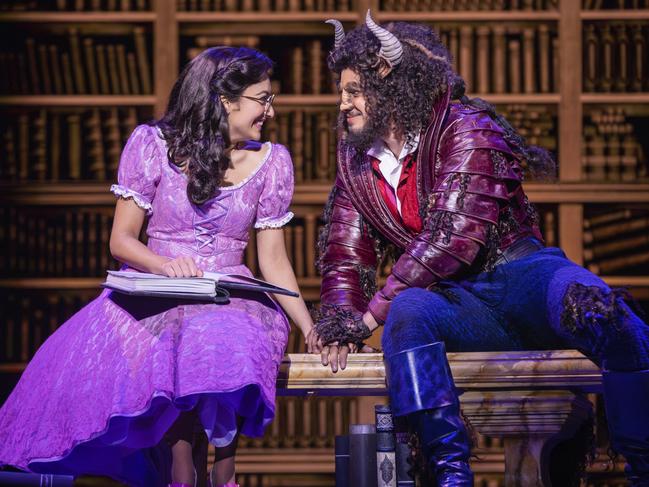
Beauty and the Beast’s return to Melbourne three decades later evoked plenty of nostalgia for audiences from the ’90s run.
“That’s my favourite part,” West says. “That people come up to me and say, ‘I saw this as a kid, and these are my children.’”
The 2025 revival stays true to the original. But West says fans will find contemporary updates in the costuming, dance arrangements and technology.
One major costume change is that bookworm Belle wears glasses when she reads.
Shubshri Kandiah, who plays Belle in the modern-day show, has spoken about how proud she was of this choice: “I love that … when I look out into the audience, I see a little girl in glasses wearing a yellow dress (like Belle’s iconic costume) and they are just beaming.”
Cormick attended the show’s Sydney premiere in 2023 with Beck and Sharon Millerchip, who also played Belle. “It felt like handing over the baton,” he says. “We all had tears in our eyes. Importantly, the magic hasn’t changed at all.”
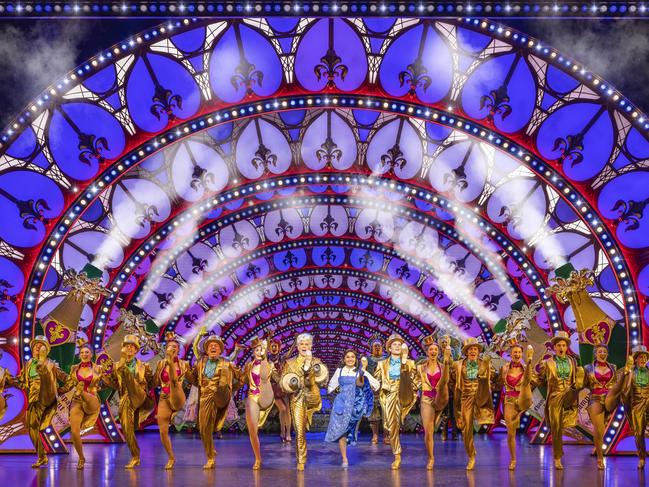
West is proud to have worked on the production in different roles, and in different stages of his career. His choreography remains a highlight – particularly in epic numbers Be Our Guest and Gaston.
The former is a 10-minute-long showstopper with tap dancing, cancan, dancing plates and cutlery, pyrotechnics, elaborate costumes, most of the main cast – and more. West says it’s a bit crazy that “Disney let me do it … it is a 10-minute number”.
“But I had a lot to say in it,” he adds.
“It goes through a lot of different genres of dance and styles of music. We do some homage to the 1930s Busby Berkeley choreography. I wanted it to be a big tap number, and I wanted to feature all the principals – Mrs Potts, Babette, Cogsworth, Lumiere, Belle.
“It’s my most favourite number I’ve ever choreographed.”
West adds that he “jumped at” the opportunity to add the role of director to his choreographer title.
“Disney called me saying they wanted to bring Beauty and the Beast back for a proper first-class production around the world and asked, would I be interested in directing it and choreographing it?” he recalls. “It’s a dream come true for me.”
Beauty and the Beast the Musical will finish its 43-week season at Her Majesty’s Theatre on April 20, then open in Adelaide in May. Tickets: beautyandthebeastmusical.com.au
Inside Melbourne’s secret treasure trove of theatre history
More than 170 years of stage-show history is hidden away in the attic of Melbourne’s oldest theatre.
Five flights of stairs above the Princess Theatre stage lies a treasure trove of programs, merch, photos, newspaper clippings, posters, records, costume and set pieces, and more, from hundreds of musicals and plays that have been performed in Melbourne and Australia.
The collection has been lovingly curated by Elaine Marriner – a member of the family that manages and operates five of Melbourne’s most prominent entertainment venues – since she and husband David took ownership of the Spring St venue in 1987.
The oldest items date back to 1854, about the time the Princess was established.
Marriner says her treasure hunt started because she and David wanted to be better acquainted with the history of the iconic building. “This has been my passion ever since we had the privilege of owning and restoring the Princess Theatre,” Marriner says. “(I wanted to) put the stories back into the walls.”
The archive features pieces from “all the shows we’ve had here, and also prior to our ownership”, plus “all the opening night programs for our theatres”.
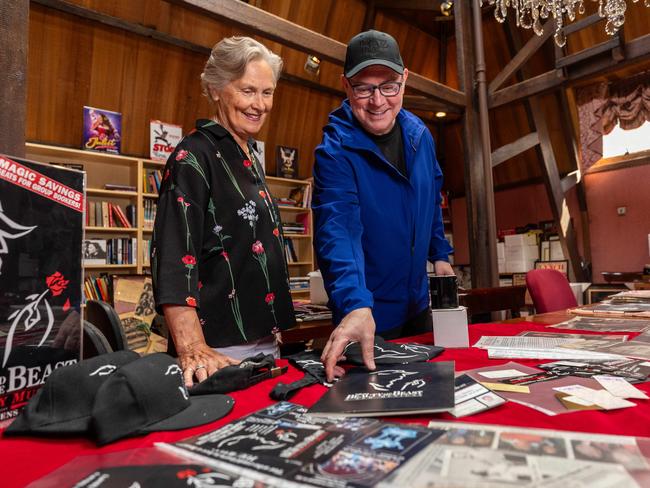
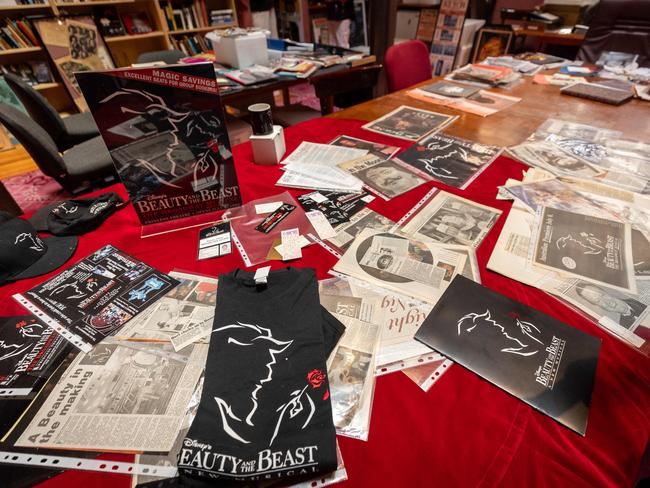
One of the oldest is for the 1858 Princess Theatre production of Il Trovatore or the Gipsy’s Vengeance!
Marriner is particularly fond of a pair of Dame Margot Fonteyn’s ballet shoes, featuring her name scrawled on the soles, which she stores in the room where her collection started. It now sprawls across at least half a dozen spaces.
Melbourne’s blockbuster mid-90s production of Beauty and the Beast is well represented. Checking out the collection during a visit from New York, the show’s choreographer, Matt West, is drawn to newspaper articles featuring the “funny and charming” Bert Newton as Cogsworth and a key ring that served as an opening night invitation he says he’s “never seen before”.
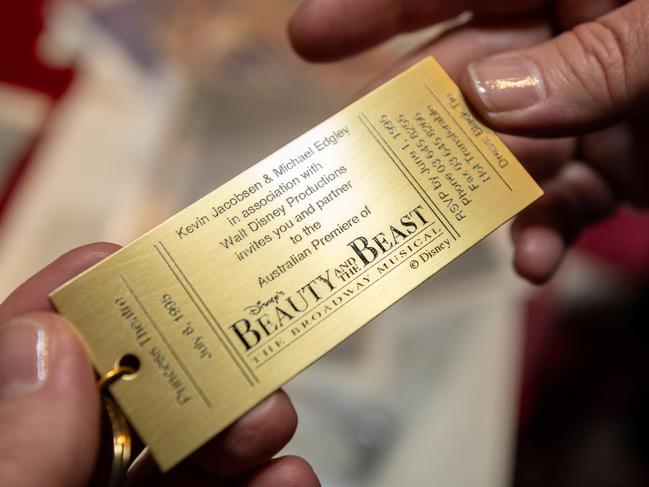
West – the director and choreographer of the production of Beauty and the Beast now playing at Melbourne’s Her Majesty’s Theatre – says he has never seen anything like Marriner’s archive.
“All of these shelves of memories, one-of-a-kind programs, things you can’t find anymore – you can feel the history,” he says. “And it smells like theatre, that’s a special smell.”



